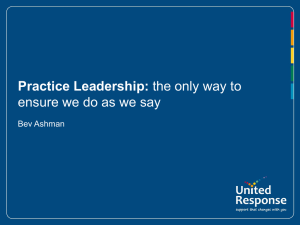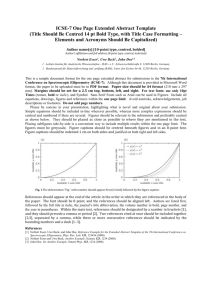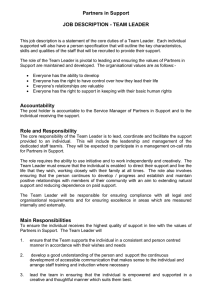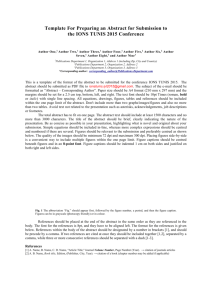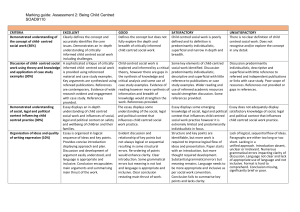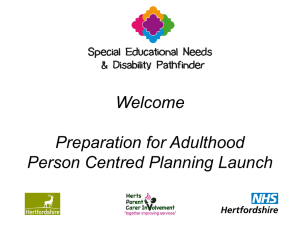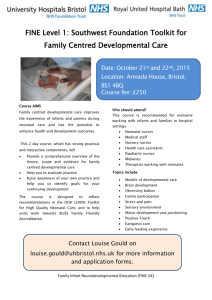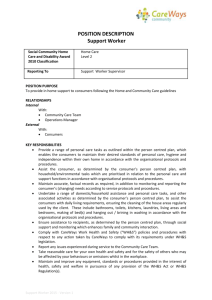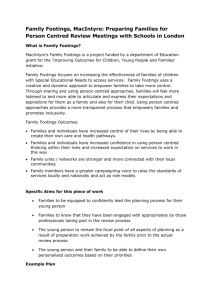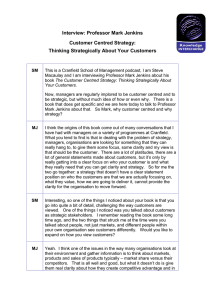Leading Person Centred Cultures in Practice. Dr Elaine Maxwell
advertisement
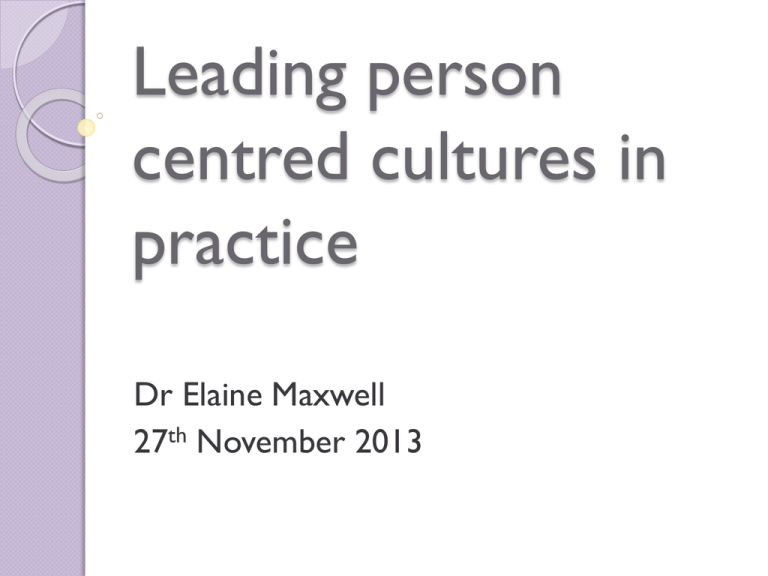
Leading person centred cultures in practice Dr Elaine Maxwell 27th November 2013 What is a person centred culture? Respectful of and responsive to individual needs Co-ordinated around and communicated around the person Supportive and empowering Easily accessible Bechtel, C. And Ness, D.L. (2010) If you build it, will they come? Designing truly patient centred care Health Affairs 29:5 914-920 The role of the person Each person is an expert in their own unique environment and the design needed to achieve good outcomes. Person centred cultures facilitate the individual to manage their own health Delwyn’s story “We sometimes speak as if caring did not require knowledge, as if caring for someone, for example, were simply a matter of good intentions or warm regard. But in order to care I must understand the other's needs and I must be able to respond properly to them, and clearly good intentions do not guarantee this (Mayeroff 1971) Leaders of Person Centred Cultures 1. Establish direction (vision and strategies for producing the change) 2. Align people to the direction (communicating vision in ways that influence people to make it happen) 3. Motivate and inspire (energizing people to overcome barriers and obstacles to change) (Kotter 1996) Establishing the direction (vision and strategies for producing the change) Creating a vision of person centred care Compassion and Dignity “compassion impels and empowers people to not only acknowledge, but also act” (Schantz, 2007). Kate Granger #HelloMyNameIs @grangerkate No decision about me without me "The unique function of the nurse is to assist the individual, sick or well, in the performance of those activities contributing to health or its recovery (or to peaceful death) that he would perform unaided if he had the necessary strength, will or knowledge” Virginia Henderson 1966 ICN Hearing the person 71% of complainants wanted to be given the chance to tell their own story of what happened. Friele and Sluijs (2006) Aligning people to the direction (communicating vision in ways that influence people to make it happen) Explicit expectations Listening to the patient voice It is the responsibility of staff to initiate the listening • Presencing (Ersser 1998) non verbal readiness of the nurse to listen conveyed to patient • Ward Sister surgeries Focused appointment times for relatives • What could we do better? Permission to raise the little things Leading person centred care Decision grids and option appraisals Sharing expected pathways Teach back (to check I’ve done my job properly can you just tell me….) Discharge letter with indicators of common adverse events and actions to take Motivating and inspiring (energizing people to overcome barriers and obstacles to change) Look after staff staff satisfaction is best indicator of patient satisfaction and quality of care (Vahey et al 2004; Pinder et al 2013) Caring for staff Emotional labour- the induction or suppression of feeling in order to produce in others a sense of being cared for in a safe place (Hochschild 1983) Schwartz rounds/ clinical supervision Keeping the door to offices open unless someone asks to meet privately gives an overwhelming sense of accessibility, openness, approachability and ‘we’re in this together’ Intervention points In summary Leaders have a vision, and make sure their staff understand it Leaders are explicit and demonstrate the behaviours that they want from staff Leaders look after the staff’s emotional Leaders listen to the patient in real time labour



